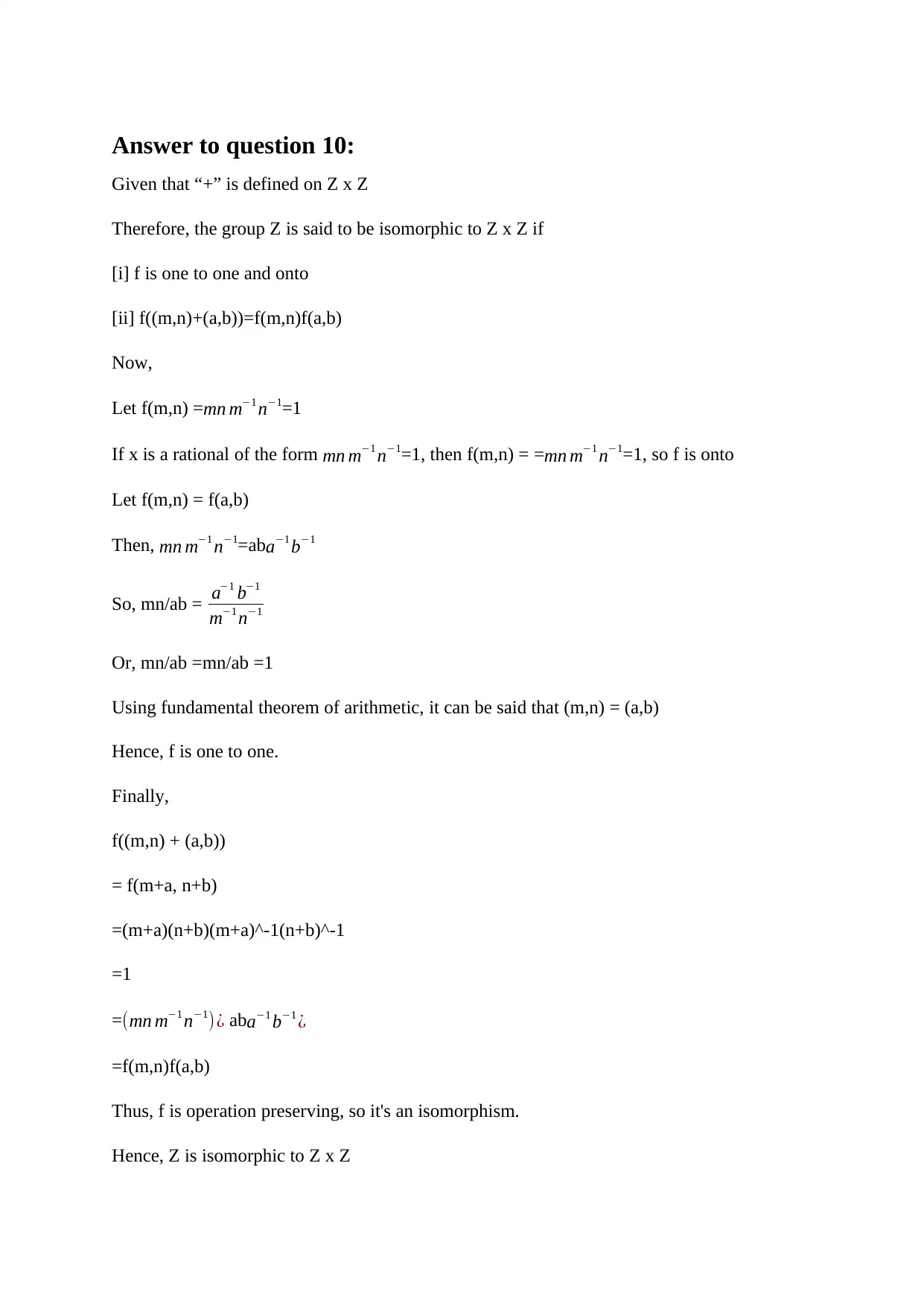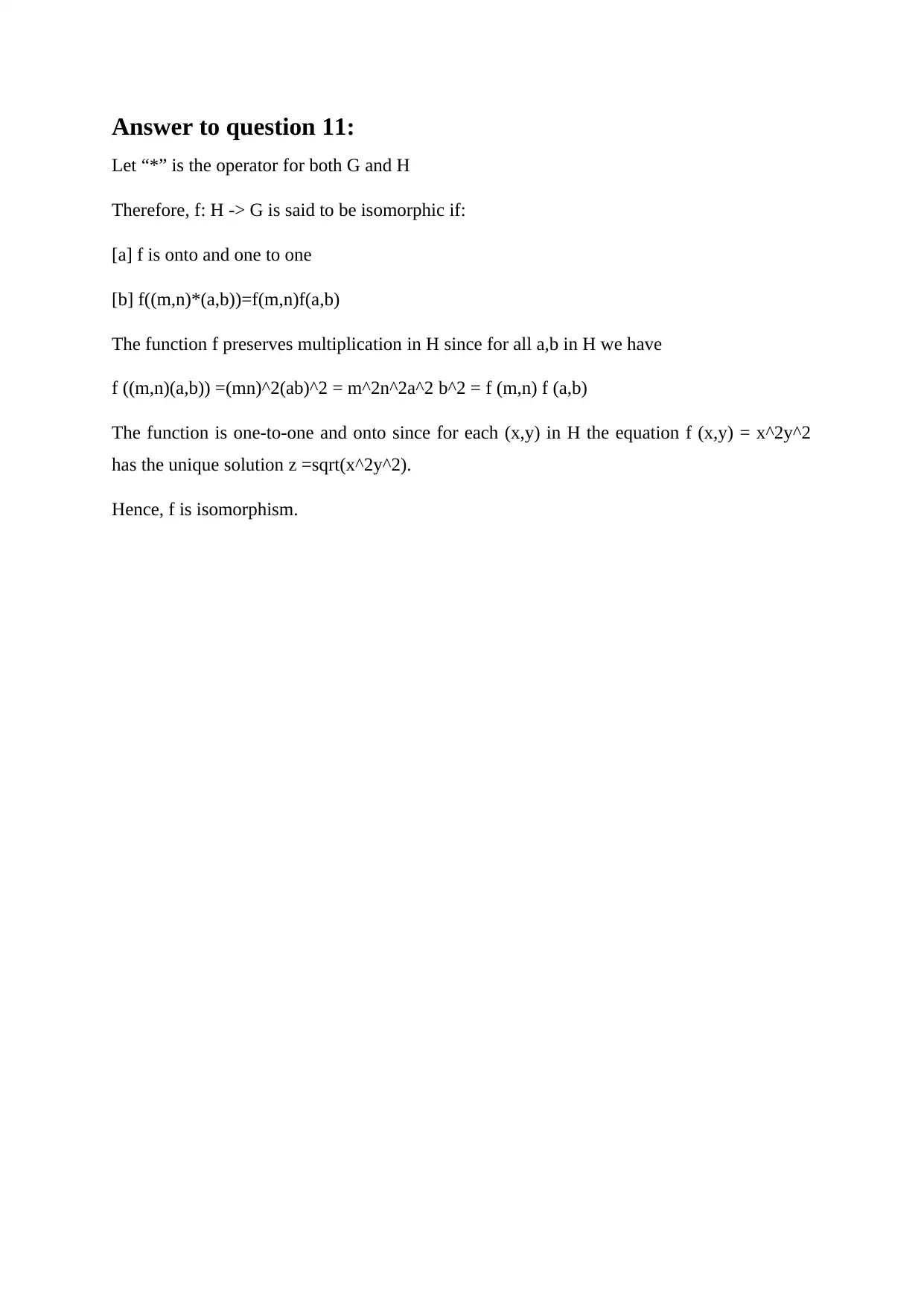Mathematics Assignment: Isomorphism, Group Theory, and Proofs
VerifiedAdded on 2021/05/31
|3
|412
|40
Homework Assignment
AI Summary
This mathematics assignment delves into the concepts of isomorphism and group theory, offering solutions to problems related to these areas. The first problem demonstrates that the group Z is isomorphic to Z x Z by showing that a function f is one-to-one, onto, and preserves the operation. The second problem proves that a function f: H -> G is an isomorphism by showing that it is onto and one-to-one, and that it preserves multiplication. The assignment provides detailed explanations and proofs to facilitate a better understanding of abstract algebra concepts. This document is available on Desklib, a platform that provides students with access to various study resources including past papers and solved assignments.
1 out of 3










![[object Object]](/_next/static/media/star-bottom.7253800d.svg)